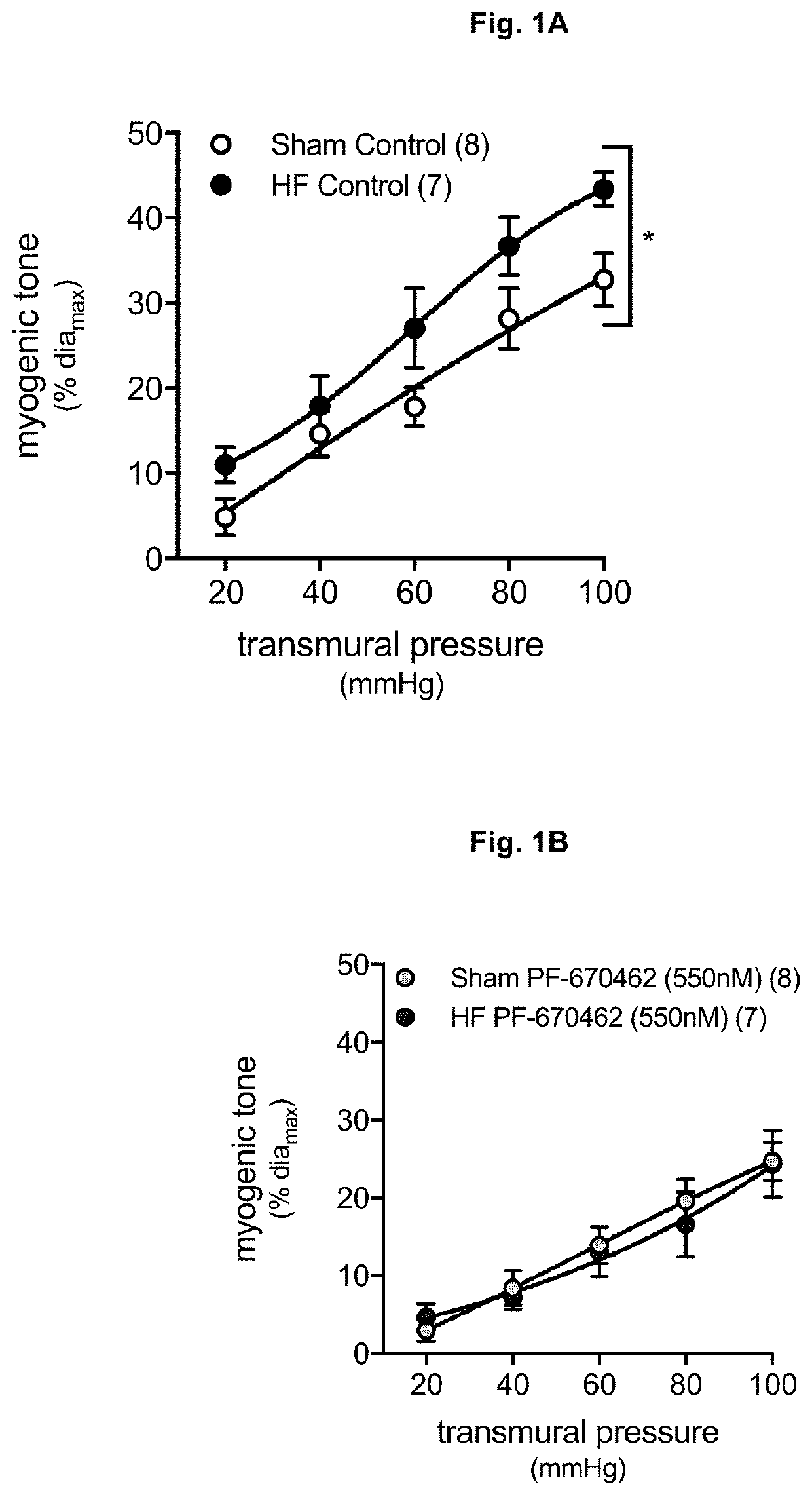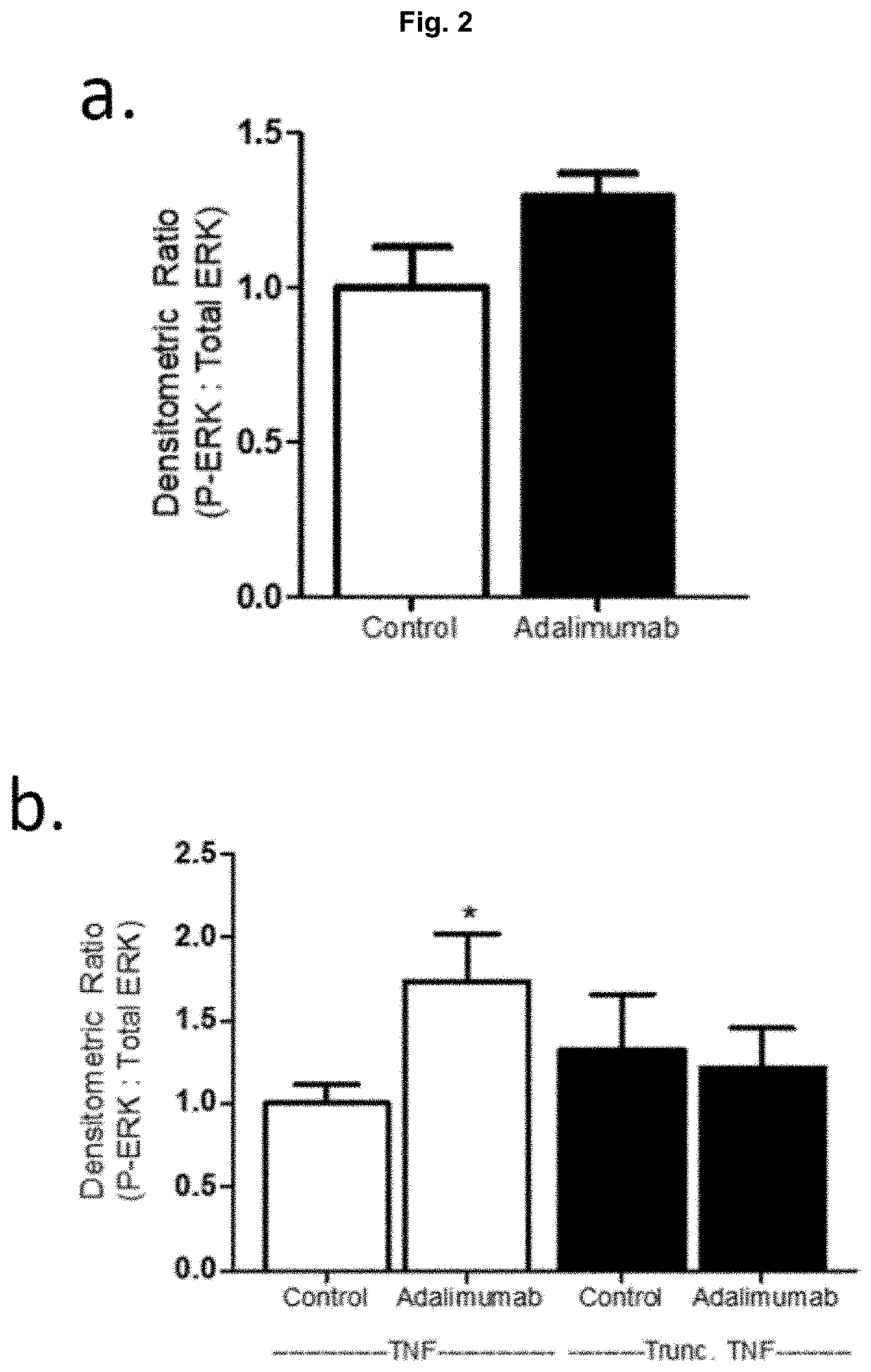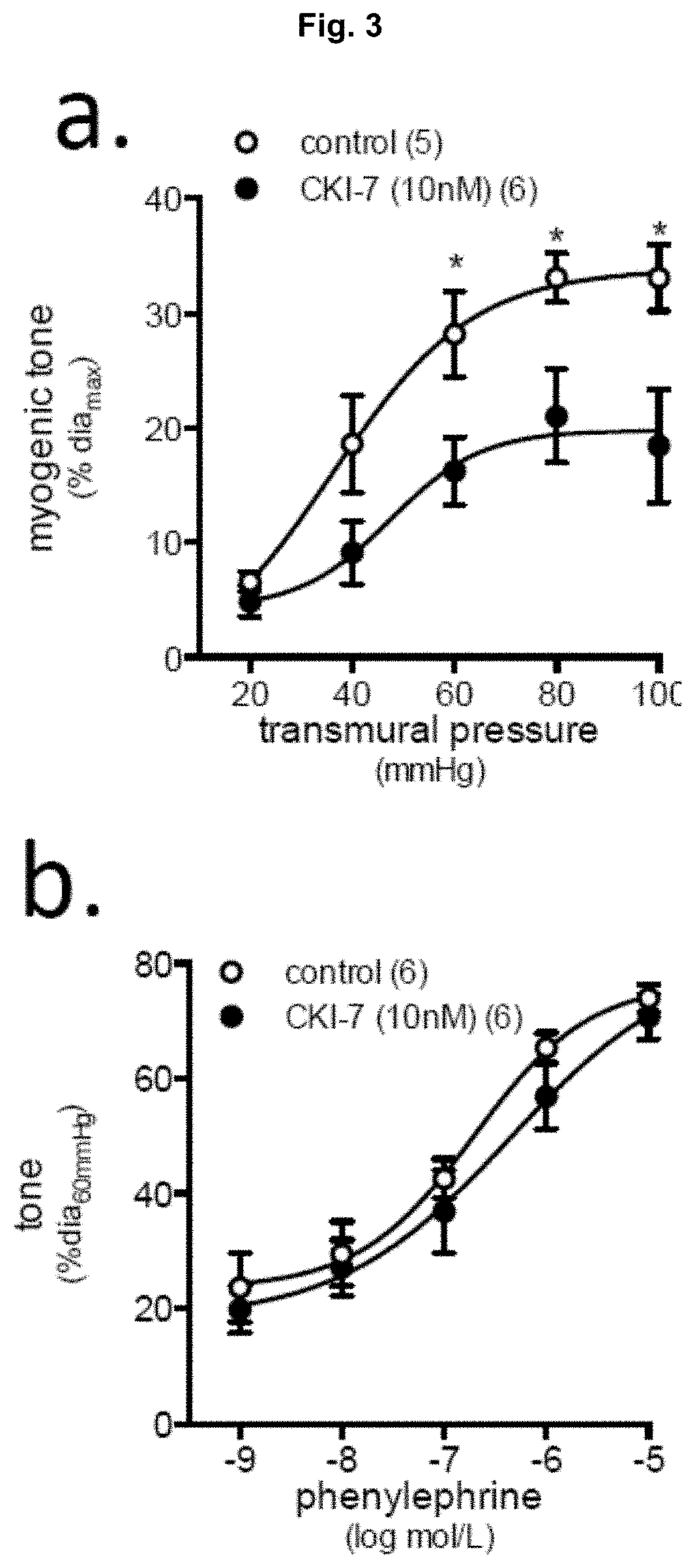Use of Casein Kinase 1 Inhibitors For Treating Vascular Diseases
a technology of vascular diseases and inhibitors, which is applied in the direction of cardiovascular disorders, drug compositions, organic chemistry, etc., can solve the problems of increasing the cost of managing cardiovascular diseases to $1.04, turning the issue into a serious threat to the global economy, and the disease remains the most devastating and challenging health issue in the world
- Summary
- Abstract
- Description
- Claims
- Application Information
AI Technical Summary
Benefits of technology
Problems solved by technology
Method used
Image
Examples
example 1
ition Reduces Myogenic Responsiveness In Vitro and In Vivo
[0045]Referring to FIG. 1, microvascular smooth muscle cells were cultured form mouse mesenteric arteries and ERK1 / 2 phosphorylation was assessed by standard western blotting. Murine cremaster skeletal muscle resistance arteries were assessed by pressure myography. mTNF reverse signaling was induced by the intrinsically active TNF type I receptor construct, sTNFR1-Fc.
[0046]In microvascular smooth muscle cells, sTNFR1-Fc increases phosphorylation of ERK1 / 2. sTNFR1-Fc-induced ERK1 / 2 phosphorylation is abolished by both the pan CK1 inhibitor CKI-7 and the specific CK16 inhibitor PF-670462. These findings were verified in cremaster skeletal muscle resistance arteries. In vitro application of CKI-7 abrogates sTNFR1-Fc-induced mTNF reverse signaling and reduces myogenic responsiveness. CK1 inhibition did not affect myogenic responsiveness in TNF arteries. In vitro, PF-670462 also reduces myogenic responsiveness and when applied in ...
example 2
Portion of mTNF Regulates Reverse Signaling
[0047]Referring to FIG. 2, human embryonic kidney (HEK) cells were transiently transfected for 24 hrs and stimulated with the TNF antibody Adalimumab (Humira™) for 5 min. mTNF reverse signaling is indicated by ERK1 / 2 phosphorylation, assessed by western blot. mTNF reverse signaling is not stimulated unless the HEK cells express a tumour necrosis factor (TNF) plasmid construct (NT=non-transfected); truncation of TNF's intracellular domain (amino acids 2-25) abolishes reverse signaling (Trunc TNF). Importantly, the cytoplasmic tail of mTNF contains the casein kinase 1 (CK1) recognition site (S(P)-X-X-S) that is removed in Trunc TNF, indicating the necessity for CK1 binding in mTNF reverse signaling.
[0048] in FIG. 2 indicates P<0.05 by unpaired Student's t-test, n=6-12 biological replicates.
example 3
nase 1 Regulates mTNF-Mediated Myogenic Responsiveness
[0049]Referring to FIG. 3, mouse cremaster skeletal muscle resistance arteries were isolated and cannulated for pressure myography. Stepwise increases in transmural pressure (20-100 mmHg in 20 mmHg steps) elicit myogenic vasoconstriction. (FIG. 3a) The pan-casein kinase 1 (CK1) inhibitor CKI-7 (10 μM in vitro) reduces myogenic responsiveness. (FIG. 3b) Vessel health is not compromised by CKI-7 as phenylephrine-induced vasoconstriction remains intact. (FIG. 3c) CKI-7 elicits dose-dependent reductions in myogenic responsiveness (n=4-6 vessels). (FIG. 3d) CKI-7 is not effective in the absence of TNF signaling (i.e., TNF knockout arteries, TNF KO). (FIG. 3e) Phenylephrine-induced vasoconstriction in TNF KO arteries is not affected by CKI-7. (FIG. 3f) Acute administration of the mTNF-stimulating fusion protein sTNFR1-Fc (100 ng / mL) stimulates vasoconstriction that is prevented by CKI-7, indicating that mTNF reverse signaling requires ...
PUM
| Property | Measurement | Unit |
|---|---|---|
| Time | aaaaa | aaaaa |
| Time | aaaaa | aaaaa |
| Selectivity | aaaaa | aaaaa |
Abstract
Description
Claims
Application Information
 Login to View More
Login to View More - R&D
- Intellectual Property
- Life Sciences
- Materials
- Tech Scout
- Unparalleled Data Quality
- Higher Quality Content
- 60% Fewer Hallucinations
Browse by: Latest US Patents, China's latest patents, Technical Efficacy Thesaurus, Application Domain, Technology Topic, Popular Technical Reports.
© 2025 PatSnap. All rights reserved.Legal|Privacy policy|Modern Slavery Act Transparency Statement|Sitemap|About US| Contact US: help@patsnap.com



